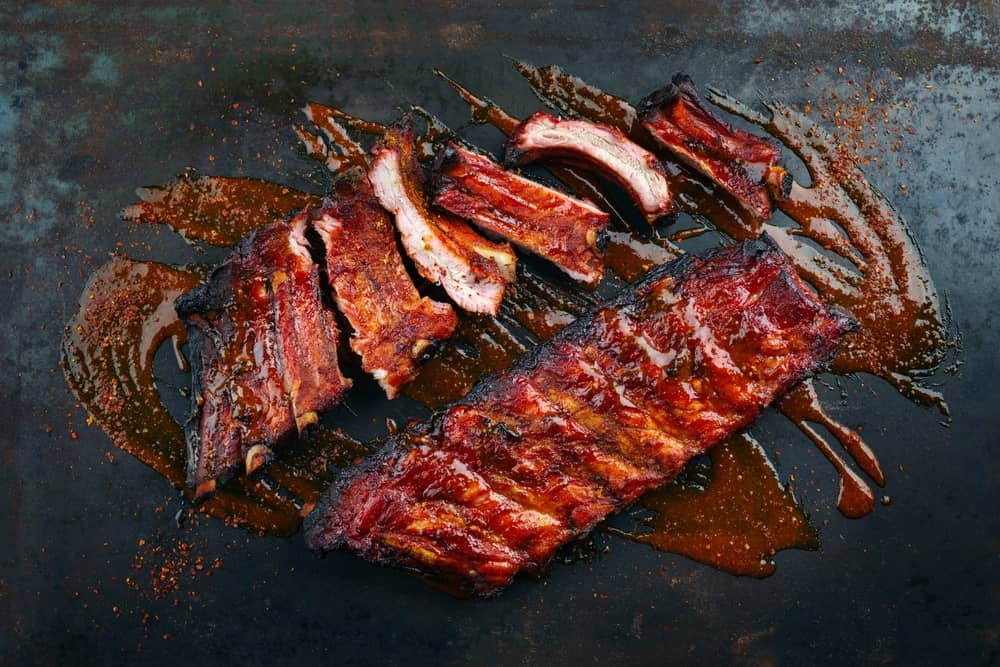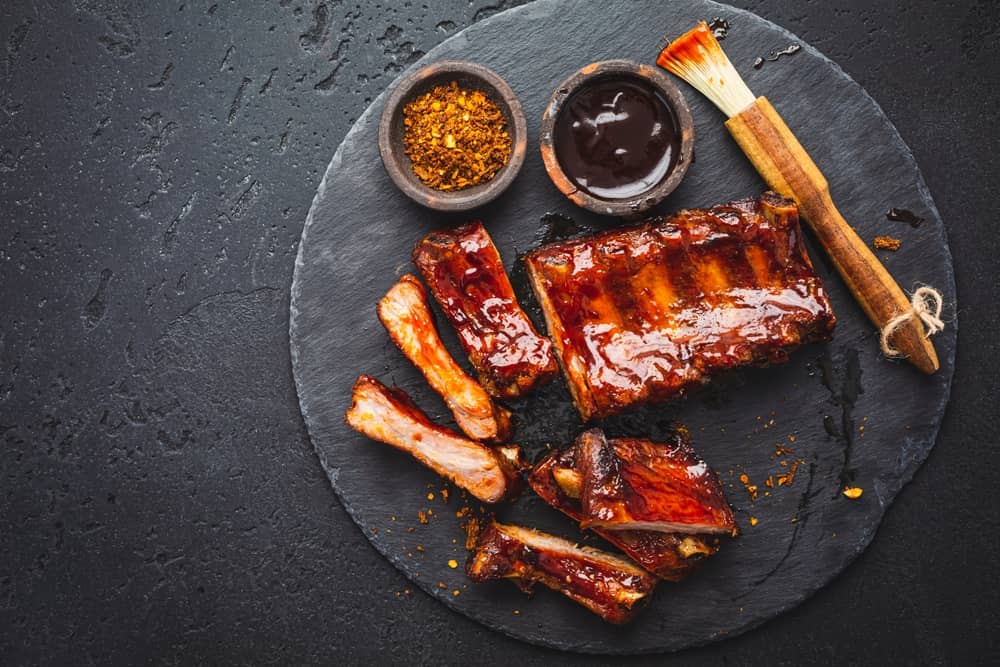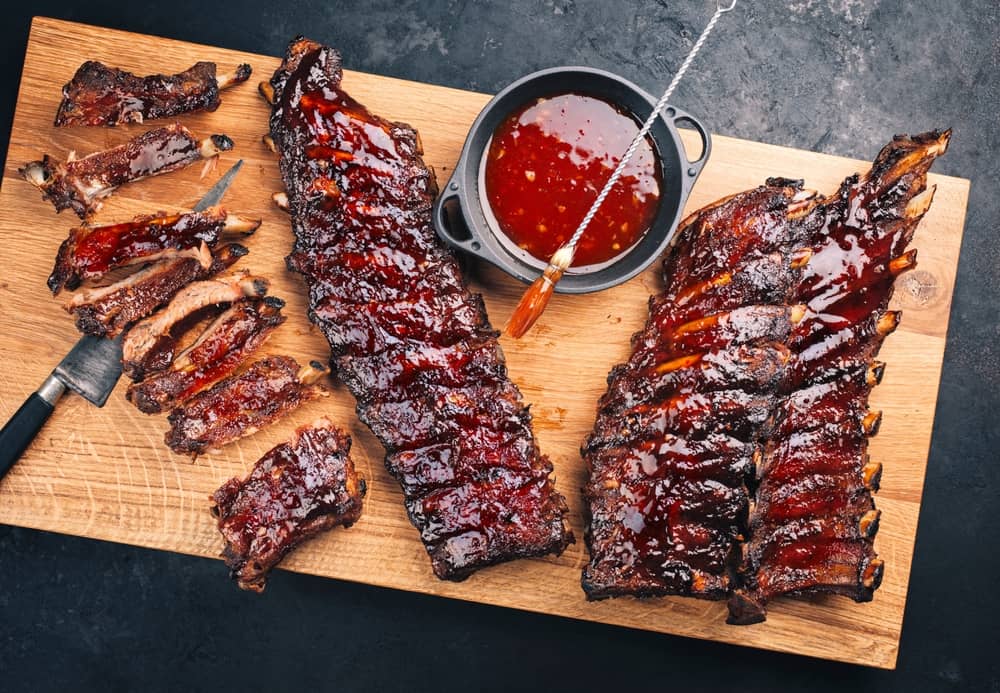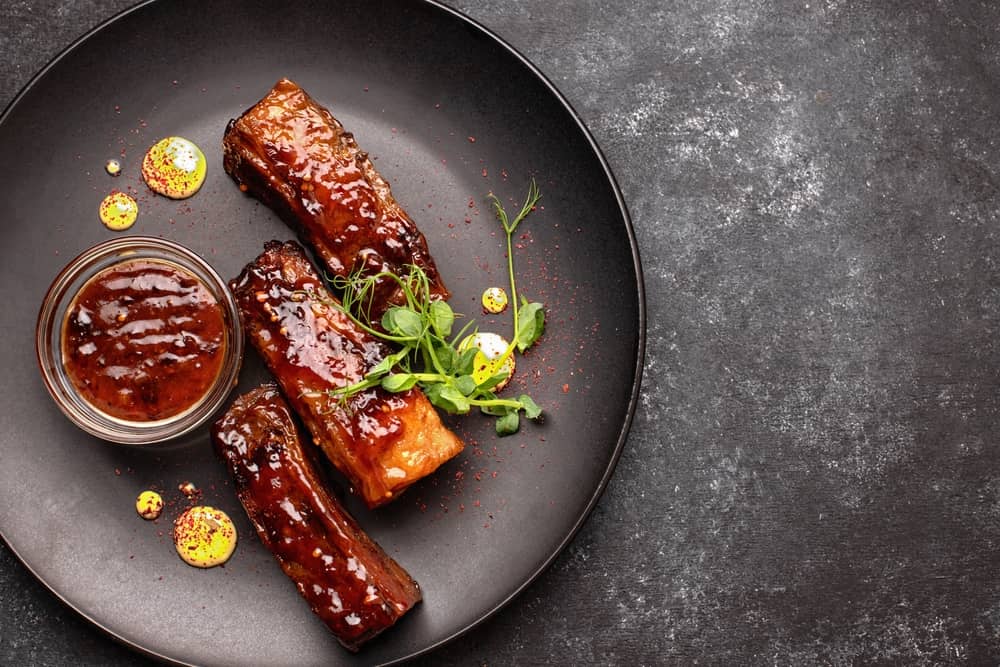
Getting into grilling may encourage you to try cooking all sorts of meats at home that you previously thought of as a restaurant-only treat. Ribs are a great example because they can seem impossible to the inexperienced grill master.
Once you’ve accomplished a few sessions of perfectly grilled steaks and roasts, you’ll be ready to tackle the bigger cuts of meat without stress. But before you fire up the smoker or grill, you have to choose between beef ribs vs pork ribs. Here’s how to make the right choice based on your personal tastes.
What Are the Ribs?
The ribs are the curved bones that protect the chest and upper abdomen area. You have ribs that extend both in the front of your chest and around the back, and so do pigs and cows.
Both beef and pork ribs are packed with muscle because these animals need plenty of support to keep their skeletal system in place as they grow. Yet there’s also a lot of fat marbled into the meat and cartilage attached to the rib bones that softens up during a long cooking time.
All of this combines to create a unique eating experience for both types of ribs. Even when they’re cooked the same way, beef and pork ribs never turn out exactly the same.
What Kind of Ribs Are Available?
One important thing to understand about beef ribs vs pork ribs is that they’re not all equal despite using similar names. The beef ribs are separated into two types:
- Back ribs, the longer and larger ribs cut from the back of the cow
- Short ribs, the shorter and much fattier ribs cut from the belly/chest of the cow
Pork ribs also come in two types, and back ribs are the most common type. Spare ribs are smaller and have more fat, and unsurprisingly, they come from the belly/chest area. If you find pork ribs labeled as short ribs, they’ll usually come from the shoulder area rather than the belly.

Baby back ribs are almost always pork because the full slabs are smaller than those that come from cows. Slab ribs can be pork or beef, but the size should help you guess which meat you’re dealing with. Both types of ribs can come in the St. Louis style. These ribs are trimmed to remove the more narrow ends so you get an even and mostly rectangular piece of meat to cook.

Rib tips can come from pork or beef rib slabs. Most boneless and country style ribs are pork rather than beef, and they’re not from the rib section at all. Instead, these rib-like pieces are cut from the shoulder roast.

The Differences and Similarities Between Beef and Pork Ribs
There are more similarities than differences between beef ribs vs pork ribs. Still, you’ll want to consider your desired cooking method and other details before deciding what to pick up at the butcher’s shop.
Cost
Beef tends to cost more in general than pork, and that holds true for ribs. You’ll generally spend anywhere from 20% to 100% per pound for beef ribs. This is especially true for trimmed St. Louis style ribs. It’s not just because beef is more valuable due to the time needed to grow a cow to full harvest size. It’s also because the work needed to prepare the ribs for cooking is harder because of the weight of the full slab of beef ribs.
Cooking Methods
Both pork and beef ribs respond well to similar cooking methods. They can take the heat of the grill or the long and slow cooking method of the smoker without falling apart or becoming tough. If you plan to cook your ribs inside in a slow cooker or wrapped in the oven, you may want to choose pork ribs. The extra fat ensures juicy results and the smaller size makes them easier to handle in smaller appliances.
Cooking Time
Beef ribs tend to take longer to cook because of the larger size. If you’re cooking two rib sections of the exact same size, the pork ribs may take longer due to the thicker layer of fat and meat on the upper side of the ribs. In most cases, the size of the cut ribs affects the cooking time more than the type of meat.
Availability
Because of their higher popularity, beef ribs are often easier to find than pork ribs. However, pork options are becoming more widely available as people grow comfortable with eating the higher fat content of the meat. You should be able to find both options equally easily, especially if you shop with Chicago Steak Company.
Size
Pork ribs are generally much smaller than beef ribs. That includes the individual rib bones and the full slabs of meat. With careful trimming, you can create a set of beef ribs that are as small and easy to handle as the pork ribs. You may need to request extra work from your butcher in order to make the larger beef ribs easier to handle, especially if you plan to use a slow cooker or oven to cook them.
Marbling
Pork ribs contain much more fat, both in solid layers over the top and marbled through the meat. Beef ribs are often somewhat lean and can dry out during cooking if you’re not careful. However, they’re more lean and easier to fit into a diet that limits fat or cholesterol.
Juiciness
Thanks to the additional marbling, pork ribs tend to turn out a little juicier than their beef counterparts. Cooking the beef ribs wrapped in foil can keep them juicy, especially if you’re smoking them for long periods or using the oven.
Taste
Both types of ribs offer a rich flavor, especially when smoked. The extra fat content of pork ribs can make them a little more succulent, but some people don’t like the taste of pork and would only enjoy the beef ribs they’re expecting. It’s best to find out the preferences of the crowd you’re serving since some people may have a strong opinion either way.
Barbecue Sauce
Both pork and beef ribs work great with all types of barbecue sauce. There’s no need to pick a specific type of meat just to match your sauce. If you love mustard-based sauces like Carolina barbecue sauce, consider pork ribs. The fatty taste comes through the strong sauce better than the beef. For traditional sweet brown sugar sauce, stick with beef ribs.
Texture
Pork ribs are softer, juicier, and more chewy even after long periods of cooking. Beef ribs are leaner and have a more crisp texture on the surface. You can keep the beef ribs softer and more juicy by modifying your cooking method.
Conclusion
The only real way to know which type of ribs you prefer is to try them both and compare them directly. Order a full rack of both pork and beef ribs and fire up the grill to do your own taste test. Find great ribs and other cuts of beef here at Chicago Steak Company to make the most of the summer grilling season. Our meat turns out amazing whether you choose pork or beef.

